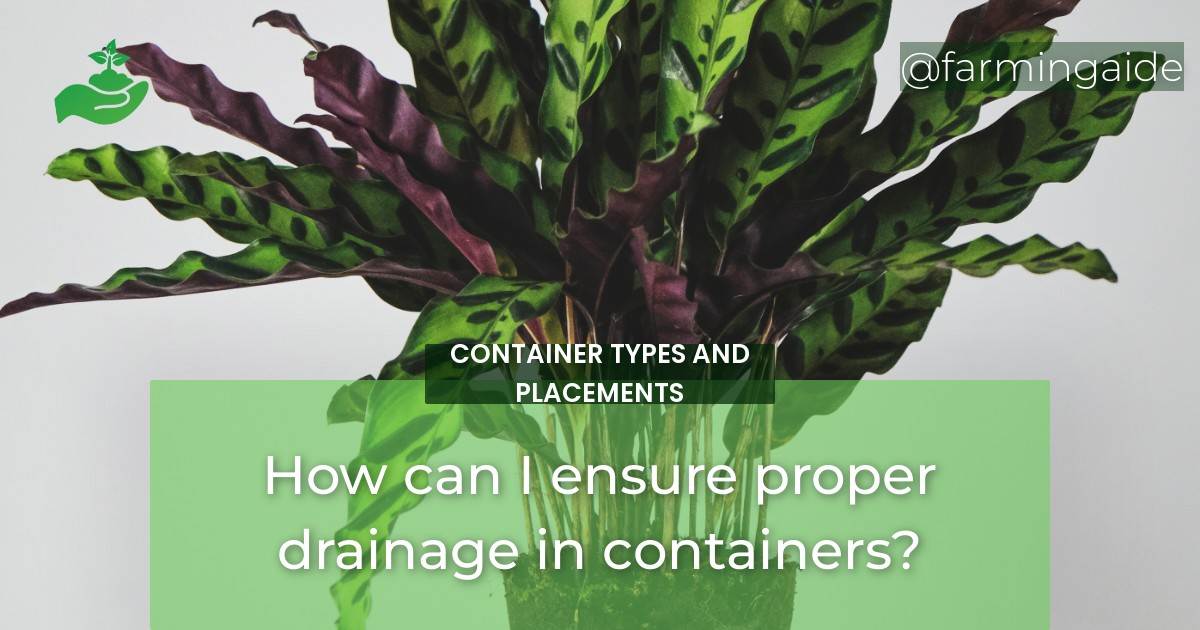When it comes to container gardening, proper drainage is key. Without adequate drainage, plant roots can become waterlogged, leading to root rot, mold growth, and other issues that can ultimately lead to plant death.
Fortunately, there are several tips and techniques that can help ensure proper drainage in container gardening.
Table of Contents
Importance of Proper Drainage in Container Gardening
Before diving into the specifics of how to achieve proper drainage in container gardening, it’s important to understand why drainage is so important in the first place. Essentially, the goal of drainage is to prevent water from pooling in the bottom of the container and suffocating the plant’s roots. Proper drainage allows excess water to flow out of the container, ensuring that the soil stays moist but not waterlogged.
Container Types and Placements for Optimal Drainage
Porous Containers
Choosing the right container is one of the most important steps in achieving proper drainage. Porous containers made from materials like clay or unglazed ceramic are ideal for container gardening because they allow excess water to evaporate through the sides of the container. This can help prevent water from pooling in the bottom of the container, which can lead to root rot and other issues.
Drainage Holes
In addition to choosing the right type of container, it’s also important to ensure that your containers have adequate drainage holes. These holes allow excess water to flow out of the container and away from the plant’s roots. If your container doesn’t have any drainage holes, you can easily add them yourself using a drill or hammer and nail.
Container Size
The size of your container can also play a role in drainage. In general, larger containers allow for better drainage than smaller containers. This is because larger containers have a greater volume of soil, which means there is more space for excess water to flow.
Placement of Containers
Finally, the placement of your containers can also impact drainage. Containers that are placed on a slight angle or propped up on blocks can help ensure that excess water flows out of the container instead of pooling in the bottom.
Soil Mix for Optimal Drainage
Compost
When it comes to soil mix, compost is a great option for container gardening because it helps improve soil structure and drainage. Compost is also rich in nutrients, which can help promote healthy plant growth.
Perlite
Perlite is another popular soil amendment that can help improve drainage in container gardening. Perlite is a lightweight, volcanic rock that is added to soil mix to increase its porosity and improve drainage.
Vermiculite
Vermiculite is similar to perlite in that it is a lightweight, porous material that is added to soil mix to improve drainage. However, vermiculite is made from mica, which means it also helps retain moisture in the soil.
Sand
Sand is another soil amendment that can help improve drainage in container gardening. It is particularly useful for heavy soils that don’t drain well on their own, as it helps increase the space between soil particles and allows for better water flow.
Maintenance for Optimal Drainage
Regular Watering
Regular watering is essential for maintaining proper drainage in container gardening. When watering your plants, be sure to water slowly and evenly to ensure that the water is absorbed by the soil and doesn’t just run straight through the container.
Fertilization
Fertilization is also important for maintaining healthy plants in container gardening. However, it’s important to use fertilizer sparingly and only as directed, as too much fertilizer can lead to salt buildup in the soil, which can inhibit drainage.
Cleaning Drainage Holes
Over time, drainage holes can become clogged with soil, debris, or other materials, which can impede water flow and lead to poor drainage. To prevent this, be sure to clean out your drainage holes regularly using a small brush or toothpick.
Re-Potting
If you notice that your plants are struggling despite your best efforts to maintain proper drainage, it may be time to re-pot them. Repotting can help refresh the soil and ensure that your plants have enough room to grow and thrive.
Troubleshooting Poor Drainage
Signs of Poor Drainage
Some signs that your container gardening setup may have poor drainage include wilting plants, yellowing leaves, and a foul odor coming from the soil.
Quick Fixes
If you notice poor drainage in your container gardening setup, there are a few quick fixes you can try before resorting to more drastic measures like repotting. One option is to simply water your plants less frequently to allow the soil to dry out a bit between waterings. Another option is to use a turkey baster or other suction device to remove excess water from the bottom of the container.
Long-Term Solutions
If your plants continue to struggle despite your best efforts, it may be time to consider more long-term solutions. Repotting your plants with fresh soil mix and making sure they have the proper drainage holes and container size can go a long way in improving drainage and promoting healthy plant growth.
Conclusion
Proper drainage is essential for success in container gardening. By choosing the right container, soil mix, and maintenance routine, you can help ensure that your plants have the proper drainage they need to thrive and grow.


